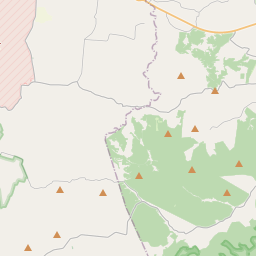Estill Steam Furnace







Six miles north. A stone stack, built, 1830, by Thomas Deye Owings, a leader in the once thriving Red River iron industry. Originally 34 ft. high, 10 ft. across inside with a steam-powered air blast, burning charcoal. Produced 1967 tons of iron in 1872. Last blast in 1874. Pig iron was made into finished products at Clay City forge and rolling mill.
(Reverse) Iron Made in Kentucky - A major producer since 1791, Ky. ranked 3rd in US in 1830s, 11th in 1965. Charcoal timber, native ore, limestone supplied material for numerous furnaces making pig iron, utensils, munitions in the Hanging Rock, Red River, Between Rivers, Rolling Fork, Green River Regions. Old charcoal furnace era ended by depletion of ore and timber and the growth of railroads
Kentucky is home to Mammoth Cave National Park, the world's longest known cave system with over 400 miles of explored passages.
One prominent figure in the county's history is Captain James Estill, for whom the county is named. Estill was a surveyor and soldier who played a key role in defending the region during conflicts with Native American tribes. In 1782, he was killed in a battle known as the Battle of Little Mountain, a significant event in the county's history.
In the 19th century, Estill County experienced growth and development, with the establishment of iron furnaces, gristmills, and sawmills. The construction of roads and the arrival of the railroad further contributed to the county's progress. Agriculture, particularly tobacco and livestock farming, became an important industry in the region.
Estill County has had its fair share of challenges as well. The Great Depression of the 1930s brought economic hardship, and the construction of the Kentucky River Lock and Dam No. 11 flooded parts of the county, leading to the relocation of residents. However, the community has shown resilience and continues to thrive.
Today, Estill County embraces its history and natural beauty, with opportunities for outdoor activities such as hiking, camping, and fishing. The county also celebrates its heritage through various events and festivals, showcasing the diverse culture and traditions of its residents.
Estill County Timeline
This timeline provides a glimpse into the major events and milestones that have shaped the history of Estill County, Kentucky.
- 1808 - Estill County is established by the Kentucky General Assembly.
- 1815 - The first courthouse is built in Irvine, the county seat.
- 1828 - Construction of the Old Town Springs Hotel begins.
- 1851 - The first public school opens in Irvine.
- 1863 - Confederate general John Hunt Morgan and his troops pass through Estill County during the Civil War.
- 1893 - The Episcopal Church is built in Irvine.
- 1926 - The Kentucky River floods, causing significant damage to the county.
- 1937 - The Works Progress Administration constructs the Estill Springs Hospital for tuberculosis patients.
- 1960 - Ravenna High School is integrated, marking an important step in desegregation.
- 1983 - The county's first industrial park is established in Irvine.
- 2010 - Estill County celebrates its bicentennial.